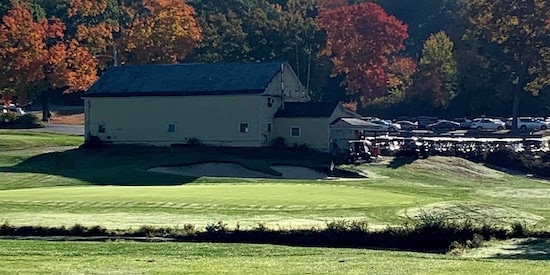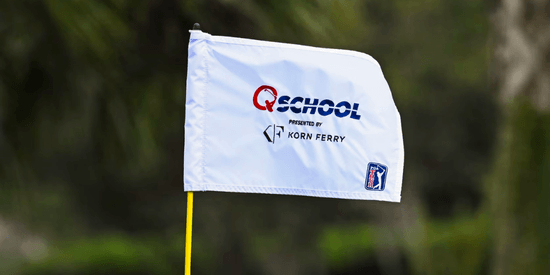The story of Robert Hawkins and Mapledale Golf Club
2/22/2022 | by Sean Melia of AmateurGolf.com

Hawkins and Mapledale GC deserve credit and praise for opening doors to a new frontier of minority golfers
In celebration of Black History Month, we're happy to share some of the stories of African-Americans who have played a significant role in the growth of golf, both on and off the course. AmateurGolf.com's course design and architect enthusiast Sean Melia tells the story of Robert H. Hawkins and his Mapledale Golf Club, which sought to bring the game of golf into the fabric of black life in the 1920s.
* * * * *
Robert H. Hawkins and his Mapledale Golf Club have been lost in golf’s history over the years.
Hawkins was the first African-American to design, operate, and manage a country club in the United States. His Mapledale Golf Club in Stow, Mass. hosted three straight national championships for black golfers.
A businessman, Hawkins was born in Adams, Mass. in 1889. He grew up caddying and fell in love with the game. Before founding Mapledale, Hawkins was the general manager at Sandy Burr in nearby Wayland, earning him the distinction of being the first African-American man to hold that position at a club in New England. His idea for Mapledale, a country club for African-American families, was born from his experience at Sandy Burr.
In 1926, Hawkins bought the 160-acre Randell Estate replete with a 20-room mansion in bucolic Stow, Mass., 25 miles east of Boston. Hawkins built a nine-hole golf course along with facilities for horseback riding, tennis, and winter activities.
It was also home to the first three United States Colored Golf Association (USCGA) Opens from 1926-1928.
In the early 1900s, on the heels of John Shippen’s appearance in the U.S. Open at Shinnecock in 1896, golf among minorities was blossoming, but the soil wasn’t fertile enough for it to grow. Black players were shut out of tournaments, so they decided to begin running their own events. In 1925, instead of continuing to work in isolation, minority golfers met in Washington D.C. to create something that would benefit all golfers shunned by the PGA.
Among that group of pioneers was Hawkins, who some historians credit with the idea of combining minority golf associations. At the conclusion of the meeting, the USCGA (later named the CGA) was born.
It was this moment that created a more competitive model for African-American golfers.
“Most of the early black-run tournaments were generally the showcase of the host club and fostered more of a social than a competitive environment,” Pete McDaniel wrote in his book Uneven Lies.
In 1926, the social atmosphere gave way to more competitive flair when Mapledale hosted the first national championship - an open event for professionals and amateurs alike. The 72-hole event was played over two days on Labor Day weekend; it had a $4 entry fee and the winner, Harry Jackson, won $100.
McDaniel wrote, “African-Americans won more than a few dollars and some hardware during that historic 48 hours. They earned an identity in a game still searching for firm footing in this country.”
Mapledale hosted the next two national championships in 1927 and 1928, won by Pat Ball and John Shippen, respectively.
It should be no surprise that in 1930, just three years after the USCGA was formed, Pat Ball became the first African-American player to compete in the prestigious Western Amateur.
Mapledale hosted its final national championship in 1928. Unfortunately, Hawkins experienced the crushing pressure of The Great Depression. The course became a public course and was renamed Stow Golf and Country Club in 1929. Ultimately, Hawkins had to sell the club due to his financial issues. There is still a golf course on the site, and it’s now a 36-hole facility called Stow Acres that hosted the USGA Public Links Championship in 1995.
While the story ends on a sad note like many during The Great Depression, Mapledale Golf Club and Hawkins deserve credit and praise for pushing golf towards a new frontier.
Pete McDaniel wrote, “It (the first national championship) was a priceless commodity considering no amount of green, gold, or silver could have purchased a place for an African-American alongside Walter Hagen or Gene Sarazen or any of the PGA’s pioneers.”
* * * * *
AmateurGolf.com's Black History Month Features
Mariah Stackhouse thrives as hostess of AJGA tournament
The Natural: Ann Gregory
Joseph Bartholomew: The architect who couldn't play through
* * * * *
Robert H. Hawkins and his Mapledale Golf Club have been lost in golf’s history over the years.
Hawkins was the first African-American to design, operate, and manage a country club in the United States. His Mapledale Golf Club in Stow, Mass. hosted three straight national championships for black golfers.
In 1926, Hawkins bought the 160-acre Randell Estate replete with a 20-room mansion in bucolic Stow, Mass., 25 miles east of Boston. Hawkins built a nine-hole golf course along with facilities for horseback riding, tennis, and winter activities.
It was also home to the first three United States Colored Golf Association (USCGA) Opens from 1926-1928.
In the early 1900s, on the heels of John Shippen’s appearance in the U.S. Open at Shinnecock in 1896, golf among minorities was blossoming, but the soil wasn’t fertile enough for it to grow. Black players were shut out of tournaments, so they decided to begin running their own events. In 1925, instead of continuing to work in isolation, minority golfers met in Washington D.C. to create something that would benefit all golfers shunned by the PGA.
Among that group of pioneers was Hawkins, who some historians credit with the idea of combining minority golf associations. At the conclusion of the meeting, the USCGA (later named the CGA) was born.
It was this moment that created a more competitive model for African-American golfers.
“Most of the early black-run tournaments were generally the showcase of the host club and fostered more of a social than a competitive environment,” Pete McDaniel wrote in his book Uneven Lies.
In 1926, the social atmosphere gave way to more competitive flair when Mapledale hosted the first national championship - an open event for professionals and amateurs alike. The 72-hole event was played over two days on Labor Day weekend; it had a $4 entry fee and the winner, Harry Jackson, won $100.
McDaniel wrote, “African-Americans won more than a few dollars and some hardware during that historic 48 hours. They earned an identity in a game still searching for firm footing in this country.”
Mapledale hosted the next two national championships in 1927 and 1928, won by Pat Ball and John Shippen, respectively.
It should be no surprise that in 1930, just three years after the USCGA was formed, Pat Ball became the first African-American player to compete in the prestigious Western Amateur.
Mapledale hosted its final national championship in 1928. Unfortunately, Hawkins experienced the crushing pressure of The Great Depression. The course became a public course and was renamed Stow Golf and Country Club in 1929. Ultimately, Hawkins had to sell the club due to his financial issues. There is still a golf course on the site, and it’s now a 36-hole facility called Stow Acres that hosted the USGA Public Links Championship in 1995.
While the story ends on a sad note like many during The Great Depression, Mapledale Golf Club and Hawkins deserve credit and praise for pushing golf towards a new frontier.
Pete McDaniel wrote, “It (the first national championship) was a priceless commodity considering no amount of green, gold, or silver could have purchased a place for an African-American alongside Walter Hagen or Gene Sarazen or any of the PGA’s pioneers.”
* * * * *
AmateurGolf.com's Black History Month Features
Mariah Stackhouse thrives as hostess of AJGA tournament
The Natural: Ann Gregory
Joseph Bartholomew: The architect who couldn't play through
Most Popular Articles

2025 PGA TOUR Q-School Guide: Sites, Scores, and Who Advanced
Dec 5, 2025Second Stage is complete and Final Stage awaits at Sawgrass — follow every Q-School leaderboard and the players still chasing
2025 LPGA TOUR Q-Series: Final Qualifying Stage FINAL SCORING
Dec 8, 2025Helen Briem earns medalist honors, 31 players headed to the LPGA next year
2025 PGA TOUR Q-School Final Stage: Ewart Leads Five New TOUR Card Winners
Dec 14, 2025A.J. Ewart topped Final Stage at TPC Sawgrass, leading five players who secured PGA TOUR membership for 2026.
Australian Open at Royal Melbourne: Preview, amateur bios, and how to watch
Nov 30, 2025Rory McIlroy headlines one of the championship's top fields in years - at least four amateurs will have their chance at gloryInside Gil Hanse’s Restoration of Baltusrol’s Upper Course: A Return to Tillinghast’s
Dec 11, 2025Renowned architect Gil Hanse reveals how he brought Baltusrol’s Upper Course back to life by honoring A.W. Tillinghast’s originalLoading latest news...
